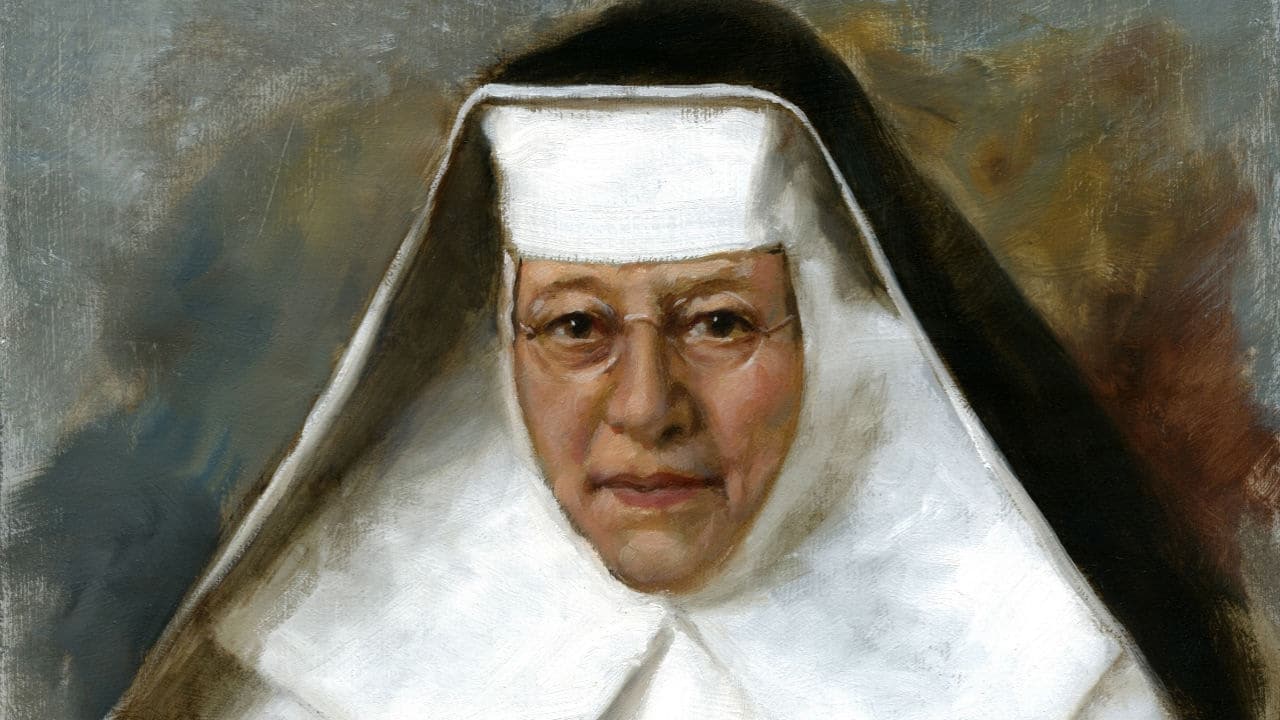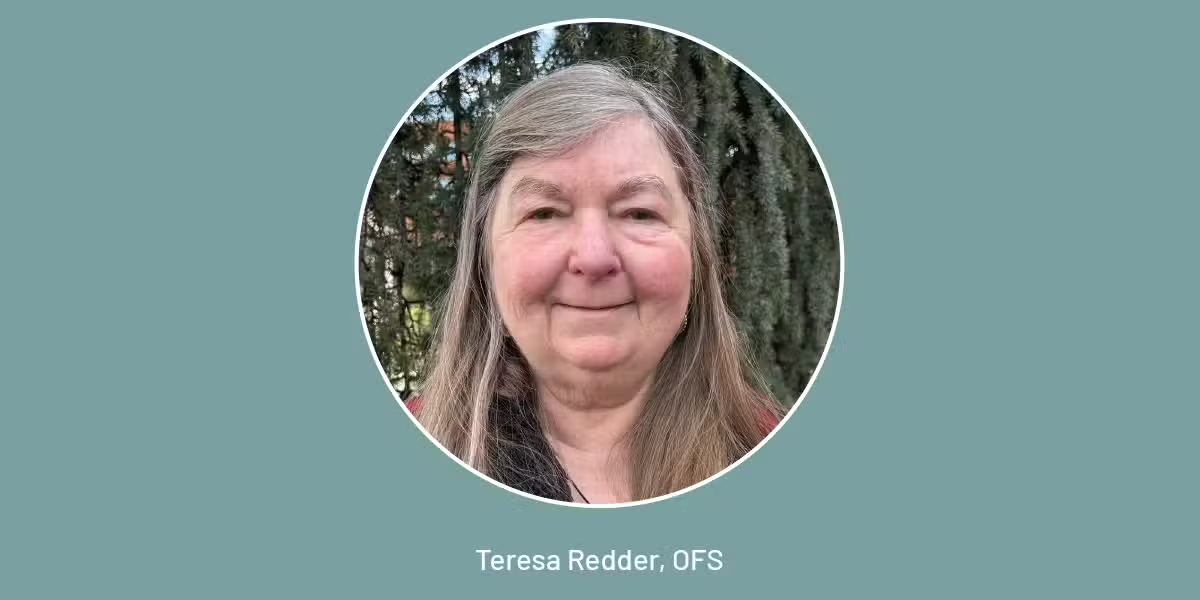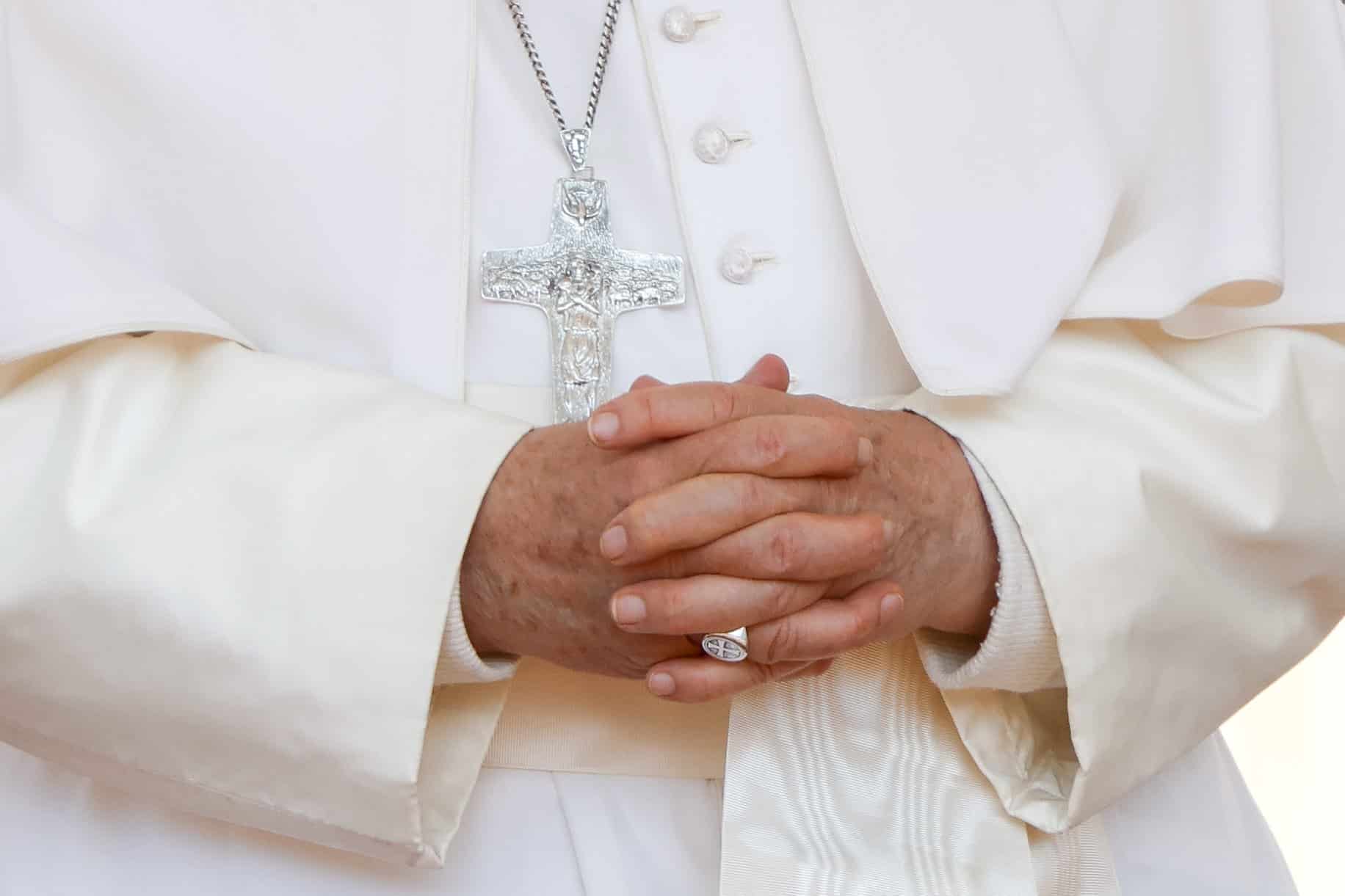In class each day, Skye learned about Mother Katharine, courtesy of Sister Marie Celine Enright, an Irish-born Sister of the Blessed Sacrament. Sister Marie Celine had regaled her Native American students with stories about the Philadelphia heiress and how she had devoted her life and her multimillion-dollar fortune to educating and seeking justice for Indians and African-Americans.
Sister Marie Celine told her teenagers about the woman in the “black robe” who had befriended Sioux Chief Red Cloud, about the slight but energetic nun who had overcome the hostility and indifference of society and the Church to establish an amazing network of schools, churches and missions specifically for blacks and Native Americans, about the zealous visionary who was almost a century before her time in demanding civil rights for all.
“I knew all about her through Sister Celine,” says Skye, who in 1957 became the first Native American graduate of Xavier University in New Orleans, there on a special scholarship secured by Sister Marie Celine. Xavier University is the only Catholic institution of higher learning established exclusively for African-Americans in the Western Hemisphere and the crowning jewel of Saint Katharine’s educational system. “Sister Marie Celine told us she was a millionairess, the daughter of an investment banker named Francis Drexel. I was very impressed because she was somebody who could do anything or be anything, and she gave it all up to work with minorities.”
Sister Marie Celine, now 80 and doing community work at Saint Agatha Parish in Los Angeles, says she had hoped to motivate her students by telling them inspirational stories about Mother Katharine.
“I knew if they went back to the reservation that would be the end of it,” Sister Marie Celine says. “I would tell them that Mother Katharine knew they could do the work and that they should be proud of themselves. The blacks and Native American people were her pride and joy, but they had never had a chance.”
And now, the woman who many believe started the Catholic Church in America on the road toward racial integration belongs to the world. On October 1, Pope John Paul II will canonize Blessed Katharine in St. Peter’s Square, making her only the second American-born saint. (Saint Elizabeth Ann Seton was the first in 1975.)
Katharine Drexel, whose cause for sainthood began in 1964 and who was declared blessed by Pope John Paul II in 1988, cleared the final hurdle to sainthood last January when the pope decreed that two-year-old Amy Wall had been miraculously healed of nerve deafness in both ears through Katharine’s intercession in 1994. It was the second miracle credited to her intercession. In 1988, the Vatican had concluded that Robert Gutherman was miraculously cured of deafness in 1974 after his family prayed for her intercession.
Skye, one among the hundreds of thousands of lives touched by Katharine and her sisters, floods with emotion when asked what her canonization means to him. “It just overwhelms me,” Skye says, pausing to find the right words. “I get full inside when I think about it. I can’t even talk about it.”
An Immense Fortune
Katharine Drexel’s story is rich, overflowing and, quite frankly, mind- boggling. Her story goes far beyond the millions of dollars she invested in establishing and supporting 65 schools, churches and centers in 21 states through her religious order, the Sisters of the Blessed Sacrament. But in an age in which Americans obsess over million-dollar game shows, Powerball lotteries and the stock market, the money Katharine Drexel gave away is a powerful and countercultural sign that, indeed, she was someone on a very different, spiritual mission.
Consider this: When her father, Francis Drexel, died in 1885, the high-powered banker left behind a $15.5 million estate that was divided among his three daughters—Elizabeth, Catherine (Katharine’s birth name) and Louise. About $1.5 million went to several charities, leaving the girls to share in the income produced by $14 million—about $1,000 a day for each woman. In current dollars, the estate would be worth about $250 million.
Over the course of 60 years—up to her death in 1955 at age 96—Mother Katharine spent about $20 million in support of her work, building schools and churches and paying the salaries of teachers in rural schools for blacks and Indians. Louise Drexel Morell, her younger sister, contributed millions more to similar causes. Elizabeth, the eldest sister, died in 1890 in premature childbirth, one year before Catherine formed the Sisters of the Blessed Sacrament for Indians and Negroes, in Bensalem, Pennsylvania, just outside Philadelphia.
Francis Drexel crafted his will carefully. His daughters controlled the income from the estate, and upon their deaths, the Drexel inheritance would flow to their children. Drexel did this to prevent his unmarried daughters from falling prey to “fortune hunters.” Neither Elizabeth nor Louise, however, had children, and the will stipulated that if that were to happen, upon his daughters’ deaths, the money would be distributed to several religious orders and charities—the Society of Jesus, the Christian Brothers, the Religious of the Sacred Heart, a Lutheran hospital and others.
Drexel, of course, had no way of knowing that his “Kate” would enter religious life in 1889 and two years later found her order. Thus, after 1955, the Sisters of the Blessed Sacrament no longer had the Drexel fortune available to support their ministries. Dr. Norman Francis, president of Xavier University in New Orleans, considers Mother Katharine’s longevity, especially in light of a serious heart attack she suffered in 1935, to be another miracle.
“There were any number of miracles that the Lord provided through her, and we’ve always called Xavier a miracle,” says Francis, whose university sends more African-American graduates to medical school than any other university in the country. “Xavier is a miracle not just for all that it has done but for the mere fact that it has survived and thrived. Under normal circumstances, that shouldn’t have been the case. If she had died at the normal age of 70, which at the time would have been a big age, Xavier would have struggled. [But] God allowed her to live until she was 96, and we had that interest available for many more years. It’s still a struggle every day, but people know we have a meaning.”
‘Why Not Be a Missionary Yourself?’
Saint Katharine DrexelMany believe Kate’s stepmother, Emma Bouvier, planted the seeds for her religious vocation. Drexel married Bouvier a few years after the death of his first wife, Hannah, who had died after giving birth to Kate in 1858. Twice a week, the Drexels distributed food, clothing and rent assistance from their family home at 1503 Walnut Street in Philadelphia. When widows or lonely single women were too proud to come to the Drexels for assistance, the family sought them out, but always quietly. As Emma Drexel taught her daughters, “Kindness may be unkind if it leaves a sting behind.”
Kate made her social debut in Philadelphia in 1879, but her stepmother contracted cancer a short time later. Kate nursed her for the final three years of her life and came to realize that not even the Drexels’ immense fortune could do anything to prevent Emma’s death. Kate began to consider a religious vocation.
Her family’s wealth also allowed Kate a firsthand opportunity to travel and see the disgraceful treatment of Native Americans. In 1868 a federal treaty had promised the Indians one teacher and one classroom for every 30 children of school age. Like so many other treaties, it was a hollow promise. In a trip with her father to the U.S. northwest territories in 1884, Kate saw Indians living in squalor and despair. After her father’s death in 1885, she and her sisters contributed money to help the St. Francis Mission on South Dakota’s Rosebud Reservation.
For many years Kate took spiritual direction from a longtime family friend, Father James O’Connor, a Philadelphia priest who later was appointed vicar apostolic of Nebraska. When Kate wrote him of her desire to join a contemplative order, Bishop O’Connor suggested, “Wait a while longer. Wait and pray.”
Kate still was reeling from the death of her father when she and her sisters went to Europe in 1886, with the hope of her regaining some physical vigor. The vacation climaxed in Rome in January 1887 when Pope Leo XIII received the Drexel sisters in a private audience. Kate told the pope about her inward pull toward the contemplative life, but she also described the plight of the Indians in North America.
“It has seemed to me more than once, Your Holiness, that I ought to aid them by my personal work among them as well, and if I enter an enclosed congregation, I might be abandoning those whom God wants me to help,” she told the pope. “Perhaps Your Holiness will designate a congregation that would give all its time and effort to the Indian missions.”
Pope Leo XIII replied with a question: “But why not be a missionary yourself, my child?”
Reaching the anteroom after the meeting, Kate broke down in tears, knowing she no longer had to wait. Bishop O’Connor counseled her to start her own order to work among Native Americans and African-Americans because if she were to join an existing order, she “may be assigned to other work, and that must not happen.”
Kate’s uncle, Anthony Drexel, tried to dissuade her from entering religious life, pleading with her to “stay with us who love you.” But she had made up her mind. She arrived at the Sisters of Mercy Convent in Pittsburgh in May 1889 to begin her six-month postulancy.
Decision Shocks Philadelphia
Her decision rocked Philadelphia social circles.The Philadelphia Public Ledger carried a banner headline: “Miss Drexel Enters a Catholic Convent—Gives Up Seven Million.”
A reporter seeking an interview showed up at the Mercy convent the day after she entered. Word was sent downstairs—there really was no news to report.

In November 1889, Kate took the religious name Sister Mary Katharine upon the suggestion of the superior general of Mercy Sisters. She professed her vows to Philadelphia Archbishop Patrick Ryan, who had become another important spiritual adviser. In addition to the vows of poverty, chastity and obedience, she added a fourth: “To be the mother and servant of the Indian and Negro races.”
In his homily, Archbishop Ryan asked if Sister Katharine’s desire for religious life required ambition. “Yes, in a way,” Ryan said, answering his own question. “Ambition to work among the poor and neglected, to work in obscurity. An even truer answer is that God calls some souls to a higher life than others. How beautiful the mission of this child who comes to devote her life, her heart, her future, to the suffering races, as when Jesus said to the rich young man, ‘Sell all thou hast and give it to the poor, and follow me.’”
Fighting Vicious Racial Prejudice
Sister Katharine pronounced final vows on February 12, 1891, and a few months later, Archbishop Ryan blessed the cornerstone of the new motherhouse under construction in Bensalem. In the first of many incidents that indicated her convictions for social justice were not shared by others, a stick of dynamite was discovered near the site.
The Sisters of the Blessed Sacrament were founded 28 years after the Emancipation Proclamation which freed the slaves, but the reality of a good life for blacks in the South was bleak. The country was still 70 years away from any widespread notion of civil rights. In 1913, the Georgia Legislature, hoping to stop the Blessed Sacrament Sisters from teaching at a Macon school, tried to pass a law that would have prohibited white teachers from teaching black students. In 1915, when Mother Katharine purchased an abandoned university building to open Xavier Preparatory School in New Orleans, vandals smashed every window.
In 1922 in Beaumont, Texas, a sign was posted by local Klansmen on the door of a church where the Sisters of the Blessed Sacrament had opened a school. “We want an end of services here,” the note read. “We will not stand by while white priests consort with nigger wenches in the face of our families. Suppress it in one week or flogging with tar and feathers will follow.” A few days later, a violent thunderstorm ripped through Beaumont, destroying a building that served as the Klan’s headquarters.
In the late 1920s, when Mother Katharine found property in New Orleans for expanding Xavier University, she used a third party as a purchasing agent to keep the transaction from falling through. When the handsome campus was dedicated in October 1932, a priest gazed upon the expensive Indiana limestone buildings and remarked in Latin: “What a waste!”
Blessed Katharine never heard the remark. The woman who had spent $656,000 for the land and new buildings watched the dedication ceremony from a third-floor window, far away from the dignitaries’ platform.
“She was so selfless and so sacrificing and so considerate,” says Sister of the Blessed Sacrament Ruth Catherine Spain, who helped document her cause for canonization. “Way back in 1891, she was a pioneer for the most downtrodden and the poorest of the poor. She didn’t have a prejudiced molecule in her body, never mind a bone. She believed that everyone was a child of God.”
In Charlotte, North Carolina, Blessed Katharine contributed $4,000 to finish construction of two churches with the stipulation that several rows of pews be set aside for use by black parishioners. In Wilmington, she funded construction of a new St. Mary Church, which was to replace an old church and be used by both blacks and whites. But when a priest, a transplant from Blessed Katharine’s home state of Pennsylvania, objected to the plan, African-Americans got the old church and whites the new one.
“It’s just painful to see things like that and to see a priest so involved,” says Benedictine Father Paschal Baumann, archivist at Belmont Abbey in North Carolina. “We do Katharine Drexel a disservice if we view her only in terms of her money. She had a real social policy to go with it. She was working for the advancement of integration, and she made that so clearly a mission of the Church, not just a social policy. When Rome is determining who should be recognized as a saint, it looks not only at sanctity but at heroic sanctity. It’s going that extra mile, and that is certainly evident in her life. It’s just magnificent to have her recognized by the Church. It’s such a tribute to all progressive thinkers in issues of social justice.
“I wonder sometimes what America and what the Catholic Church might have been in respect to minorities had she not come along,” added Francis, who hopes to build a $6.3 million Saint Katharine Drexel Religious Center at Xavier in her honor. “She saved the Church from embarrassment in terms of social justice.”
Frugal and Savvy
Even though she was raised in opulence, Blessed Katharine took seriously her vow of poverty. She used pencils until they were nubs, wrote return correspondence on the blank side of the letters she received and opened up the flaps of envelopes for notepaper. When her shoelaces snapped, she sewed them back together rather than buy a new pair. She frequently encountered the ire of train conductors on her many visits to her schools and missions because she spent as much time as possible in the day coach, which was a cheaper fare, before retiring for a few hours in the sleeper car. The savings were used to increase her tips to the black porters.
After surviving a heart attack in 1935, Blessed Katharine refused to purchase a wheelchair. Instead, she was reluctantly persuaded to allow workers to affix wheels on a wooden chair from the motherhouse’s auditorium.
Her charitable ways so impressed Congress in the 1920s that she successfully lobbied for an amendment to the federal tax code that would allow an organization that gave at least 90 percent of its income to charity an exemption from income taxes. In 1923 alone, she had trust income of $217,426.98 and was forced to pay $74,390.32 in taxes, a 34-percent bite. The law became known as “The Philadelphia Nun Loophole.”
Forty-five years later, Senator Russell B. Long (D-La.), the powerful chairman of the Senate Finance Committee, bemoaned the amendment because it allowed big corporations to shield income with creative accounting methods. “I can tell you one thing,” Long said. “If this Philadelphia nun knew all the trouble she’s caused us, I’m sure she’d be sorry.”
Her Legacy Lives On
Saint Katherine DrexelWhatever headaches she may have caused lawmakers, Blessed Katharine changed lives, one at a time. Knowing that rural schools for blacks in south Louisiana needed qualified teachers to survive, she trained men and women at Xavier for education degrees and then convinced their parents to allow them to leave home to teach. Bertha Thomas Antonio, one of the first graduates to respond to the call for teachers, told Sister of the Blessed Sacrament Patricia Lynch that her mother said, “If we won’t help our own people, who will?” Mrs. Thomas sent three daughters to teach in the rural schools.
Katharine Drexel’s legacy lives through the children whose lives she has touched directly and through her sisters.
Her order, the Sisters of the Blessed Sacrament, today has 245 members who are pursuing their original apostolate of working with African-Americans and Native Americans in 21 states and Haiti, the poorest country in the Western Hemisphere.
“It humbles you to hear how many professional men and women say, ‘I am where I am today because of what the Sisters of the Blessed Sacrament did for me,’” says Sister Beatrice Jeffries, vice president of the congregation. “There is a wonderful statement in the motherhouse chapel: ‘I look up and wonder at all of God’s wonderful ways and I think to myself, What would happen to a desire that God implants on the heart if we listen and act on that desire?’ That colors everything we do.
“She’s beyond us now,” Sister Beatrice adds. “She belongs to the Church. We can’t hold on to her. She belongs to all of us.”
Her legacy lives through Joseph Skye, the “immature kid” who remembers walking across the Xavier campus “and looking at the beautiful buildings and saying to myself, ‘I’m going to make it, I’m going to make it.’
“I wanted to get away from a government-subsidized existence,” Skye says. “I wanted to be in a free market where you could go as far as you can based on competition. Like my real-estate logo says today, ‘The Skye’s the limit.’” In a loving tribute to his former teacher, Sister Marie Celine, Skye is helping to pay her way to Rome for the canonization.
Katharine’s legacy lives through once-deaf Amy Wall, now seven, who just made her First Communion and heard the priest say, “The Body of Christ.”
Sister Ruth Catherine says, “Amy’s mother asked her one night, ‘Why do you think God healed you?’ And Amy said, ‘Because God loves me and I love him.’ What more could you ask for? Love is the be-all and end-all of life. If everybody loved, how different the world would be.”








